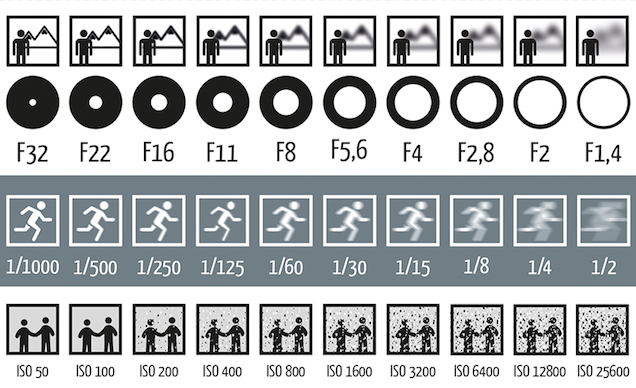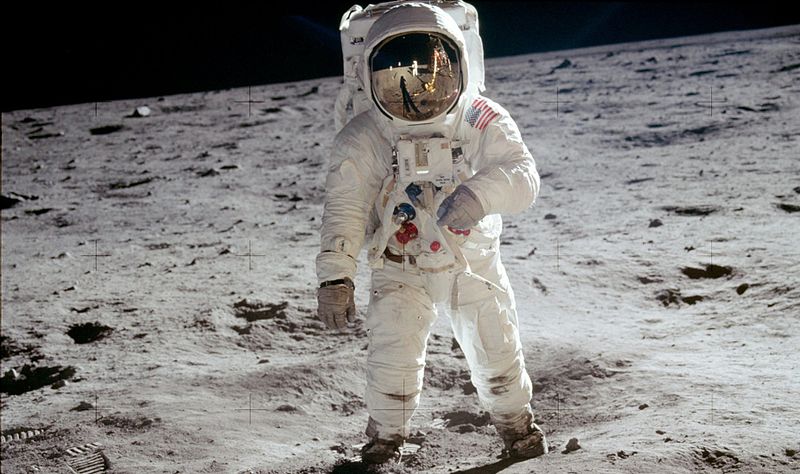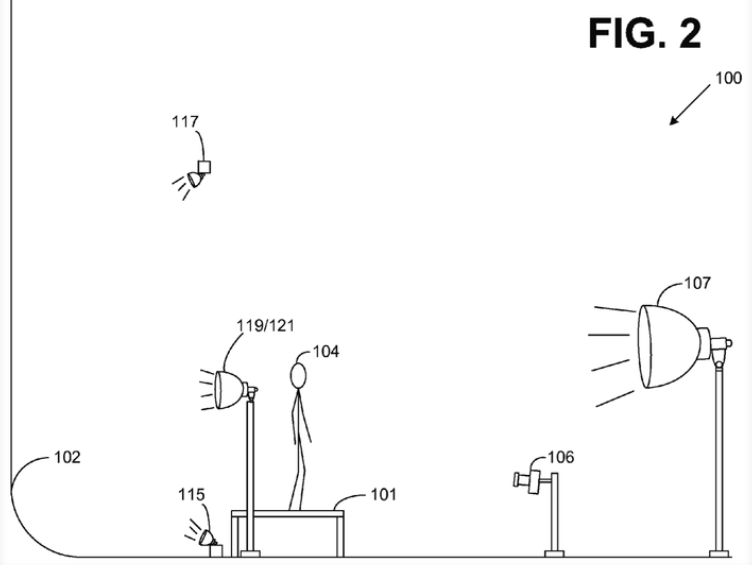At LifeHacker, Thorin Klosowski has a quick visual reminder of how the basic photography concepts of aperture, shutter speed, and ISO setting impact the photo you want to take:


At LifeHacker, Thorin Klosowski has a quick visual reminder of how the basic photography concepts of aperture, shutter speed, and ISO setting impact the photo you want to take:

Lastly, in this book there will be no scenery. This is not laziness on my part; it is self-control. Nothing is easier to write than scenery; nothing more difficult and unnecessary to read. When Gibbon had to trust to travellers’ tales for a description of the Hellespont, and the Rhine was chiefly familiar to English students through the medium of Caesar’s Commentaries, it behooved every globe-trotter, for whatever distance, to describe to the best of his ability the things that he had seen. Dr. Johnson, familiar with little else than the view down Fleet Street, could read the description of a Yorkshire moor with pleasure and with profit. To a cockney who had never seen higher ground than the Hog’s Back in Surrey, an account of Snowdon must have appeared exciting. But we, or rather the steam-engine and the camera for us, have changed all that. The man who plays tennis every year at the foot of the Matterhorn, and billiards on the summit of the Rigi, does not thank you for an elaborate and painstaking description of the Grampian Hills. To the average man, who has seen a dozen oil paintings, a hundred photographs, a thousand pictures in the illustrated journals, and a couple of panoramas of Niagara, the word-painting of a waterfall is tedious.
An American friend of mine, a cultured gentleman, who loved poetry well enough for its own sake, told me that he had obtained a more correct and more satisfying idea of the Lake district from an eighteenpenny book of photographic views than from all the works of Coleridge, Southey, and Wordsworth put together. I also remember his saying concerning this subject of scenery in literature, that he would thank an author as much for writing an eloquent description of what he had just had for dinner. But this was in reference to another argument; namely, the proper province of each art. My friend maintained that just as canvas and colour were the wrong mediums for story telling, so word-painting was, at its best, but a clumsy method of conveying impressions that could much better be received through the eye.
Jerome K. Jerome, Three Men on the Bummel, 1914.
Take it away, Tamara:
The FAA says no posting of drone footage on YouTube?
AHAHAHAHAHAHAHAHAHA!
That’s a good one, Canute. Have fun with that.
Anyone want to start a betting pool on how long before we have a drone footage on YouTube of another drone hovering along with a Guy Fawkes mask over its camera?
At Marginal Revolution Alex Tabarrok looks at the first randomized controlled trial of body cameras for police officers:
The results were that police use of force reports halved on shifts when police wore cameras. In addition, the use of force during the entire treatment period (on shifts both using and not using cameras) was about half the rate as during pre-treatment periods. In other words, the camera wearing shifts appear to have caused police to change their behavior on all shifts in a way that reduced the use of force. A treatment that bleeds over to the control group is bad for experimental design but suggests that the effect was powerful in changing the norms of interaction. (By the way, the authors say that they can’t be certain whether the cameras primarily influenced the police or the citizens but the fact that the effect occurred even on non-camera shifts suggests that the effect is primarily driven by police behavior since the citizens would not have been particularly aware of the experiment, especially as there would have been relatively few repeat interactions for citizens.)
It is possible that the police shaded their reports down during the treatment period but complaints by citizens also fell dramatically during the treatment period from about 25-50 per year to just 3 per year.
Here’s a graph of use of force reports before and during the treatment period.
Virginia Postrel explains why images are so important even in discussions of ordinary, everyday importance:
In an ideal world, political discourse would consist only of logical arguments backed by empirical evidence. Visual persuasion would have no place.
There would be no fireworks on the Fourth of July; no pictures of the president speaking from the Oval Office or grinning at children or greeting soldiers or reaching over the sneeze guard at Chipotle; no “Morning in America” or “Daisy” commercials; no “Hope” or “We Can Do It” posters; no peace signs or Vs for victory or Black Power salutes; no news photos of gay newlyweds kissing or crowds celebrating atop a crumbling Berlin wall or naturalized citizens waving little flags; no shots of napalmed girls running in terror or the Twin Towers aflame; no Migrant Mother or dreamy Che Guevara; no political cartoons, Internet memes, or Guy Fawkes masks; no “shining city on a hill” or “bridge to the future”; no Liberty Leading the People or Guernica or Washington Crossing the Delaware; no Statue of Liberty.
In this deliberative utopia, politics would be entirely rational, with no place for emotion and the propagandistic pictures that carry it. And we would all be better off.
At least that’s what a lot of smart people imagine.
It’s an understandable belief. Persuasive images are dangerous. They can obscure the real ramifications of political actions. Their meanings are imprecise and subject to interpretation. They cannot establish cause and effect or outline a coherent policy. They leave out crucial facts and unseen consequences. They reduce real people to stereotypes and caricatures. They oversimplify complicated situations. They can fuel moral panics, hysteria, and hate. They can lead to rash decisions. Their visceral power threatens to override our reason.
Yet images are so ubiquitous they’ve been called “the lingua franca of politics.”
Techdirt‘s Mike Masnick alerted me to a new source of old images:
Here’s some nice news. Kalev Leetaru has been liberating a ton of public domain images from books and putting them all on Flickr. He’s been going through Internet Archive scans of old, public domain books, isolating the images, and turning them into individual images. Because, while the books and images are all public domain, very few of the images have been separated from the books and released in a digital format.
There are all sorts of images in this stream, so you never know what you’ll find when you dive in. Here, for example is an image used in Canadian grocer January-June 1908:
Which, if you follow the link to the original publication, was isolated from this page of ads:
Or the rather impressive works of George White & Sons in London, Ontario:
This image appeared in Canadian Machinery and Manufacturing News (January-June 1913), illustrating a “Staff article” about the company:
A description of the works of an old established firm building threshing machinery, traction engines, etc. The plant has been gradually built up to its present size, the foundry being the latest addition. The company maintain two branches in the West and have agencies in all the principal cities and towns in the grain growing districts of Canada.
Mark Steyn looks at the situation in Ferguson, Missouri and the larger problem of police militarization generally:
It’s important, when something goes wrong, to be clear about what it is that’s at issue. Talking up Michael Brown as this season’s Trayvonesque angel of peace and scholarship was foolish, and looting stores in his saintly memory even worse. But this week’s pictures from Ferguson […] ought to be profoundly disquieting to those Americans of a non-looting bent.
The most basic problem is that we will never know for certain what happened. Why? Because the Ferguson cruiser did not have a camera recording the incident. That’s simply not credible. “Law” “enforcement” in Ferguson apparently has at its disposal tear gas, riot gear, armored vehicles and machine guns … but not a dashcam. That’s ridiculous. I remember a few years ago when my one-man police department in New Hampshire purchased a camera for its cruiser. It’s about as cheap and basic a police expense as there is.
Last year, my meek mild-mannered mumsy office manager was pulled over by an angry small-town cop in breach of her Fourth Amendment rights. The state lost in court because the officer’s artful narrative and the usual faked-up-after-the-fact incident report did not match the dashcam footage. Three years ago, I was pulled over by an unmarked vehicle in Vermont and (to put it mildly) erroneously ticketed. In court, I was withering about the department’s policy of no dashcams for unmarked cars, and traffic cops driving around pretending to be James Bond but without the super-secret spy camera. The judge loathed me (as judges tend to), but I won that case. In 2014, when a police cruiser doesn’t have a camera, it’s a conscious choice. And it should be regarded as such.
And, if we have to have federal subsidy programs for municipal police departments, we should scrap the one that gives them the second-hand military hardware from Tikrit and Kandahar and replace it with one that ensures every patrol car has a camera.
[…] when the police are dressed like combat troops, it’s not a fashion faux pas, it’s a fundamental misunderstanding of who they are. Forget the armored vehicles with the gun turrets, forget the faceless, helmeted, anonymous Robocops, and just listen to how these “policemen” talk. Look at the video as they’re arresting the New York Times and Huffington Post reporters. Watch the St Louis County deputy ordering everyone to leave, and then adding: “This is not up for discussion.”
Really? You’re a constable. You may be carrying on like the military commander of an occupying army faced with a rabble of revolting natives, but in the end you’re a constable. And the fact that you and your colleagues in that McDonald’s are comfortable speaking to your fellow citizens like this is part of the problem. The most important of the “nine principles of good policing” (formulated by the first two commissioners of the Metropolitan Police in 1829 and thereafter issued to every officer joining the force) is a very simple one: The police are the public and the public are the police. Not in Ferguson. Long before the teargassing begins and the bullets start flying, the way these guys talk is the first indication of how the remorseless militarization has corroded the soul of American policing.
MIT, Adobe and Microsoft have developed a technique that allows conversations to be reconstructed based on the almost invisible vibrations of surfaces in the same room:
Researchers at MIT, Microsoft, and Adobe have developed an algorithm that can reconstruct an audio signal by analyzing minute vibrations of objects depicted in video. In one set of experiments, they were able to recover intelligible speech from the vibrations of a potato-chip bag photographed from 15 feet away through soundproof glass.
In other experiments, they extracted useful audio signals from videos of aluminum foil, the surface of a glass of water, and even the leaves of a potted plant. The researchers will present their findings in a paper at this year’s Siggraph, the premier computer graphics conference.
“When sound hits an object, it causes the object to vibrate,” says Abe Davis, a graduate student in electrical engineering and computer science at MIT and first author on the new paper. “The motion of this vibration creates a very subtle visual signal that’s usually invisible to the naked eye. People didn’t realize that this information was there.”
[…]
Reconstructing audio from video requires that the frequency of the video samples — the number of frames of video captured per second — be higher than the frequency of the audio signal. In some of their experiments, the researchers used a high-speed camera that captured 2,000 to 6,000 frames per second. That’s much faster than the 60 frames per second possible with some smartphones, but well below the frame rates of the best commercial high-speed cameras, which can top 100,000 frames per second.
I was aware that you could “bug” a room by monitoring the vibrations of a non-soundproofed window, at least under certain circumstances, but this is rather more subtle. I wonder how long this development has been known to the guys at the NSA…
The first men walked on the moon on this day in 1969:

Astronaut Buzz Aldrin, lunar module pilot, stands on the surface of the moon near the leg of the lunar module, Eagle, during the Apollo 11 moonwalk. Astronaut Neil Armstrong, mission commander, took this photograph with a 70mm lunar surface camera. While Armstrong and Aldrin descended in the lunar module to explore the Sea of Tranquility, astronaut Michael Collins, command module pilot, remained in lunar orbit with the Command and Service Module, Columbia. *This is the actual photograph as exposed on the moon by Armstrong. He held the camera slightly rotated so that the camera frame did not include the top of Aldrin’s portable life support system (“backpack”). A communications antenna mounted on top of the backpack is also cut off in this picture. When the image was released to the public, it was rotated clockwise to restore the astronaut to vertical for a more harmonious composition, and a black area was added above his head to recreate the missing black lunar “sky”. The edited version is the one most commonly reproduced and known to the public, but the original version, above, is the authentic exposure.
I didn’t realize that almost all the Apollo 11 photographs of astronauts are of Buzz Aldrin. For some reason, Neil Armstrong appears in only a few of them, and The Atlantic‘s Rebecca Rosen wonders why:

Bootprint in lunar dust created and photographed by Buzz Aldrin for the boot penetration (soil mechanics) task during the Apollo 11 moon walk.
If there is one thing everybody knows about Neil Armstrong, it is this: “One small step for [a] man, one giant leap for mankind.” This quotation, in my mind at least, appears illustrated, conjuring the image above of an imprint left by a human boot upon the dusty lunar surface.
Except that’s not the first step, nor was it left by Armstrong. It’s a footprint made by Buzz Aldrin, the second man to walk on the moon.
[…]
The explanation for this paucity is murky at best, prone to the uncharitable reading that Aldrin was getting “Armstrong back by taking no photographs of him on the Moon” in retribution for Armstrong getting the honor of first to set foot on the lunar surface.
But this is speculation at best. Aldrin, at least, has always said that the lapse was inadvertant, the result of Armstrong carrying the camera most of the time, a picture of Armstrong not appearing on the bucket list of things to do while on the moon, and Armstrong never stopping to ask for one. According to Aldrin, he was about to take a picture of Armstrong at the flag ceremony when President Nixon called, distracting them from the task.
[…]
Later, Aldrin expressed regret about the oversight. “When I got back and someone said, ‘There’s not any of Neil,’ I thought, ‘What in the hell can I do now?’ I felt so bad about that. And then to have somebody say that might have been intentional…. How do you come up with a nonconfrontational argument against that? I mean, that was just such a divisive observation, and Neil and I were never in the least divisive. We really were intimidated by the situation we found ourselves in on the Moon, hesitant and with an unclear idea of what to do next.”
Hansen’s book includes a handful of divergent opinions from different NASA administrators, theorizing as to how this, what Hansen calls “one of the minor tragedies of Apollo 11,” could have happened. Was it mere oversight or petty payback? Men sticking close to the plan or men sticking too close to the plan?
H/T to Colby Cosh:
This quirk of history is usually covered as if it were, or even could have been, the astronauts’ fault. It’s a bit unfortunate.
— Colby Cosh (@colbycosh) July 20, 2014
Published on 26 Apr 2014
Part I/IV of a timelapse series through the always changing landscapes of New Zealand. Shot over 4 month, travelling through amazing landscapes, sleeping under the stars, hiking on mountains and exploring remote roads. Locations in this video where at Fjordland NP, Mount Cook NP and Arthurs Pass NP, Mavora Lakes and Lake Ohau.
H/T to Roger Henry who said “A nice bit of promo work for NZ. […] A little bit Arthur Clarkish in a couple of spots.”
Stephen Shankland provides another exhibit in the patent-system-is-broken case:

Photographers are hooting derisively at a patent Amazon won in 2014 for a photography lighting technique that’s been in use for decades, a patent that’s helped undermine the credibility of the patent system.
Amazon’s patent 8,676,045, granted in March and titled “Studio Arrangement,” describes a particular configuration of the photography subject in the foreground and a brightly lit white screen behind, an approach that “blows out” the background to cleanly isolate the subject.
It’s a fine idea, but not a novel invention, argued David Hobby, a professional photographer since 1988 who runs the Strobist site that for years has been a popular source of advice on flash photography. He used the approach himself as a staff photographer on his first job decades ago for a business publication.
Nick Gillespie loves the Millennials. No, he really does:
That discomfort you’re sensing all around you? It’s the American Establishment loading its Depends diapers over the prospect of a younger generation that is turning its back on political parties and other zombified artifacts of our glorious past.
On the heels of the Pew Research report titled “Millennials in Adulthood,” two leading New York Times columnists have penned anxious articles sweating it out over the “The Self(ie) Generation” and “The Age of Individualism.”
“Millennials (defined by Pew as Americans ages 18 to 33) are drifting away from traditional institutions — political, religious and cultural,” muses Charles M. Blow, who sees a “a generation in which institutions are subordinate to the individual… This is not only the generation of the self; it’s the generation of the selfie.” Oh noes! And it’s only gonna get worse: “In the future,” worries Ross Douthat, “there will be only one ‘ism’ — Individualism — and its rule will never end. As for religion, it shall decline; as for marriage, it shall be postponed; as for ideologies, they shall be rejected; as for patriotism, it shall be abandoned; as for strangers, they shall be distrusted. Only pot, selfies and Facebook will abide.”
Does it strike anyone else as odd that selfies — clearly less the product of rising narcissism and more the product of the same awesome technology that empowers citizens to capture cops beating the shit of innocent people — have emerged as this year’s droopy pants, backwards baseball caps, or visible piercings, as a shorthand for all that is wrong with today’s youth? Getting bent out of shape over selfies may just be the ultimate #firstworldproblem.
Martha Gill is underwhelmed by Betabrand’s use of PhDs as runway clothing models:
‘Hey ladies, you might have PhDs, but really you all want to be models’
Is there no job you don’t need a ludicrous set of qualifications for nowadays? Clothing company PhD, in a fairly ill-defined attempt to, I don’t know, raise awareness or something, have hit upon a novel concept for a fashion shoot: recruiting only models with PhDs.
“Our designers cooked up a collection of smart fashions for spring, so why not display them on the bodies of women with really big brains?” founder Chris Lindland said in a statement. Supporters have greeted it as a feminist move, saying it helps to promote “different kinds of female role models”.
Hmmm. Does it? I’m really not so sure that it does.
[…]
I mean, I see what they’re trying to do. They are trying to broaden the public’s idea of models, make them more representative, and show that being intelligent is something to aspire to, too. They just haven’t managed to do this. In any way.
You see, what I think they’ve done here is confuse the term “role model” with “clothing model”. The drive to make models more “representative” (see also Dove’s “real women” campaign) is actually setting up modelling to be far more aspirational than it is. It takes as read that being a model is the pinnacle of feminine achievement, and all we need to do to make girls feel good about themselves is to tell them they, too, can all be models. Even if they’re PhD students.
But models are just models. Really, really, ridiculously good-looking people doing what, when it comes down to it, is a fairly crap job.
The photo chosen to accompany the article in the Telegraph is why I originally wrote “runway model” instead of “clothing model”. The photos in the Daily Mail taken from the Betabrand website are much less … ridiculous than the Telegraph implies. They’re just modelling ordinary clothing for ordinary women, not the weird and totally impractical stuff some clothing designers foist on their runway models at fashion shows.
I’d say there’s no story here (despite blogging about it), but there is. It’s just not quite the drive-by that the Telegraph‘s photo editor wants it to be. Betabrand scored a lot of free advertising and (probably) got its clothing line modelled on the cheap as well. It’s rather amusing that the Daily Mail is significantly more realistic in their coverage of this story than the Telegraph.
A post at the Laurier Centre for Military Strategic and Disarmament Studies website introduces a digitized collection of maps, unit diaries, and other Canadian military history artifacts:
The Laurier Military History Archive – www.lmharchive.ca – is a project that was initiated in the Summer of 2013 by the Laurier Centre for Military Strategic and Disarmament Studies (LCMSDS), at Wilfrid Laurier University (Waterloo, Ontario). It offers the public previously unavailable access to a variety of digitized materials from LCMSDS’ archival holdings, and will increasingly offer digitized materials in partnership with other archival institutions and private donors. At time of our official launch of the website we would like to draw your attention to three collections in particular which our dedicated volunteers have worked hard to make available to you.
The three featured collections are the Second World War Canadian Army Air Photos Collection, The George Lindsey Fonds, and The Canadian War Diaries of the Normandy Campaign Collection.
Powered by WordPress